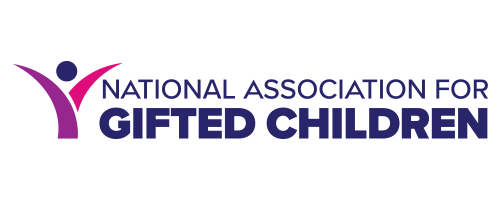Teaching for Creativity: Cultivating the Potential of Culturally and Linguistically Diverse Students
By Corey J. Gray, Ph.D. Candidate
Have you ever wondered, “how can I cultivate the creative potential and capacities of my culturally and linguistically diverse students?” If so, you are in good company and in the right place. This blog post was written just for you.
Recognizing the Narrative: Creativity in Every Student and Every Situation
Before we explore instructional strategies and frameworks for fostering creativity, let’s first define it and understand its role in K-12 education. Seminal scholars have long conceived and refined its definition, but in gifted education, creativity is widely recognized as the process of generating novel, original, and useful ideas or products (Plucker et al., 2004; Puryear & Lamb, 2020). Many individuals tend to relegate creativity to the arts, but creativity is embedded in everything that we do and see. The device you're reading this on? The result of someone's creative vision. The light in your room? A solution from a philosopher seeking to see more clearly. Even the breathtaking moments of the 2025 NBA Dunk Contest showcased creativity in full display. Creativity often stems from the desire to solve a problem, contribute to the world, or simply bring an imaginative, sometimes wild, idea to life.
Under this concept of creativity, it is critical for us to understand that everyone has the capacity to be creative. Creativity is a fundamental human capacity. No one is exempt from that foundational truth. However, educators many times do not cultivate the creative characteristics within their students because teachers tend to desire and encourage traits that are contraindicative of creativity (Kettler et al., 2018). Could this be because the American schooling structure was, and still is in many instances, never set up to support creativity? The American school system was historically designed to train students to follow instructions rather than think about and create within the world around them. Policies like No Child Left Behind (2005) reinforced and pressured multiple educators and schools to teach to a test rather than teach to the needs and interests of the individual child. We must confront how creativity has been hindered and discouraged in education and then commit to a paradigm shift, one that allows us to truly explore strategies and frameworks that actively awaken and cultivate the creative potential within our students.
Reframing the Narrative: From Undesired Behaviors to Creative Strengths
To teach for creativity, we must first recognize how the aforementioned concept of creativity manifests in students. Let’s consider your most impulsive student - yes, the student that gives you the most opportunities to practice patience daily. Did you know that impulsivity is one of the strongest creative traits in students, especially in twice- and thrice-exceptional students (Baum et al., 2017; Ruban & Reis, 2005)? Yet, because impulsivity presents itself as disruptive classroom behaviors, it is oftentimes met with disciplinary actions and harsh consequences rather than responsive encouragement. The same is true for students who make up their own rules, challenge authority, or express intense emotions.
When we are met with creative traits that push and test our limits, how do we respond? Does our response and actions support or stifle their creative identity and potential?
Using TABs to Identify Giftedness and Nurture Creativity
Dr. Mary M. Frasier, a pioneer and trailblazer in gifted education, was particularly renowned for her work in preparing educators to identify giftedness within their students. Frasier et al. (1995) developed the Traits, Attitudes, and Behaviors (TABs) framework for gifted identification which includes ten traits that teachers can explore when evaluating and identifying students for gifted eligibility, especially students of color. These traits include interests, motivation, inquiry, insight, humor, communication skills, memory, reasoning, problem-solving ability, and imaginative creativity. All of these traits are thoroughly defined and recognized in empirical literature as creative traits. So then, what if instead of using these traits solely for gifted identification, we also use them as a foundation for planning high ability, creativity-based instruction? For instance:
Humor in Learning:
In reading, instead of having students summarize the main idea of a text through a traditional summary, students could express the main idea of the text in the most humorous way possible. Similarly, they also can analyze and interpret a figure or formula in their mathematics course through a comedic lens as well, like the image below.
Note: From Find X Memes Funny - I Found It Poster [Photograph], by FealHerion, RedBubble. https://www.redbubble.com/i/poster/Find-X-Memes-Funny-I-Found-it-by-FealHerion/44489886.LVTDI
Imaginative Creativity:
At times, students may use their imagination to daydream or wander off, which is highly undesired by many educators. But what if we reframed this to our advantage? Students could read a text and imagine a proposed sequel or prequel to that text or novel. In their history course, you could challenge your students to envision a historical figure’s daily habits or predict what their life would resemble in today’s world.
Communication Skills:
Take the most elaborate and detailed science report that is developmentally appropriate for your students and prompt them to communicate these findings to someone with minimal research experience. To that end, take a text written in the early 1900s or before then, and challenge your students to either rewrite this text using modern-day language. You might also do the opposite by finding a text that was published recently and have students orally communicate it with diction and a tone that resembles the 1800s.
Our students exhibit creative characteristics constantly, and on a daily basis, but how intentional are we with nurturing their creativity?
Flipping the Narrative: Torrance’s Creative Positives
Dr. E. Paul Torrance, the "father of creativity" who we highlighted in our April 2024 blog post, was one of the most vocal advocates for identifying and nurturing creativity in culturally diverse students. During his research with high ability Black students, Torrance (1970) developed and identified 16 creative positives. These traits are similar to TABs but are distinct in nature. They include:
- Ability to express feelings
- Ability to improvise with commonplace materials
- Articulate in role playing, creative activities
- Enjoyment and ability in art, drawing, painting, etc.
- Enjoyment and ability in creative dramatics, dance, etc.
- Enjoyment and ability in music
- Expressiveness in speech
- Fluency and flexibility in non-verbal media
- Enjoyment and skills in group learning, problem solving
- Responsiveness to kinesthetic
- Expressiveness of gestures, body language, etc.
- Humor
- Richness of imagery in informal language, brainstorming
- Problem-centeredness
- Emotional responsiveness
- Quickness of warm up
Torrance flipped the very creative traits that many educators do not desire in their classrooms into positive perceptions of these characteristics, as they are essential for creative thinking and can lead to academic achievement (Gajda et al., 2017). In that same spirit, challenge yourself to observe, acknowledge, and affirm these traits when they appear in your classroom. Genuine praise and authentic recognition can help all students, especially those that are culturally, linguistically, and ethnically diverse, embrace their creative identities and potential rather than suppress it.
Reclaiming the Narrative: Teaching for Cultural Creativity
Teaching for creativity isn’t just about adding artistic projects to your lesson plans. While STEM and STEAM approaches to teaching and learning encourage creative problem-solving, creativity-based instruction goes beyond the surface of curricular approaches and talent development programs. It aligns with Torrance’s (1966) belief that we should teach students how to think, not what to think. Sternberg (2023) defines cultural creativity as “one’s ability to be creative across cultural boundaries, both of space and of time” (p. 363). This notion affirms that every child, regardless of their zip code, socioeconomic status, or race and ethnicity, is creative and that creativity-based instruction should emphasize the development of their creative characteristics, thinking, and processes. So, how will you encourage your students to think, both critically and creatively? How will you cultivate the creative genius that is already within them?
References
- Baum, S. M., Schader, R. M., & Hébert, T. P. (2017). To be gifted and learning disabled: Strength-based strategies for helping twice-exceptional students with LD, ADHD, ASD, and more (3rd ed.). Prufrock Press.
- FealHerion. (2025). Find X Memes Funny - I Found It Poster [Photograph]. RedBubble. https://www.redbubble.com/i/poster/Find-X-Memes-Funny-I-Found-it-by-FealHerion/44489886.LVTDI
- Frasier M. M., Hunsaker S. L., Lee J., Mitchell S., Cramond B., Krisel S., Gracia Jaime H., Martin D., Frank E., Finley V. S. (1995). Core attributes of giftedness: A foundation for recognizing the gifted potential of minority and disadvantaged students (research monograph 95210). Storrs: University of Connecticut. National Research Center for Gifted and Talented https://nrcgt.uconn.edu/wp-content/uploads/sites/953/2015/04/rm95210.pdf
- Gajda, A., Karwowski, M., & Beghetto, R. A. (2017). Creativity and academic achievement: A meta-analysis. Journal of Educational Psychology, 109(2), 269–299. https://doi.org/10.1037/edu0000133
- Kettler, T., Lamb, K. N., Willerson, A., & Mullet, D. R. (2018). Teachers’ Perceptions of Creativity in the Classroom. Creativity Research Journal, 30(2), 164–171. https://doi.org/10.1080/10400419.2018.1446503
- Plucker, J. A., Beghetto, R. A., & Dow, G. T. (2004). Why isn't creativity more important to educational psychologists? Potentials, pitfalls, and future directions in creativity research. Educational psychologist, 39(2), 83-96. https://doi.org/10.1207/s15326985ep3902_1
- Puryear, J. S., & Lamb, K. N. (2020). Defining creativity: How far have we come since Plucker, Beghetto, and Dow?. Creativity Research Journal, 32(3), 206-214. https://doi.org/10.1080/10400419.2020.1821552
- Ruban, L.M. and Reis, S.M. (2005) Identification and Assessment of Gifted Students with Learning Disabilities. Theory into Practice, 44, 115-124. https://doi.org/10.1207/s15430421tip4402_6
- Sternberg, R. J. (2023). Cultural creativity: A componential model. In D. D. Preiss, M. Singer, & J. C. Kaufman (Eds.), Creativity, innovation, and change across cultures (pp. 363–387). Palgrave Macmillan/Springer Nature. https://doi.org/10.1007/978-3-031-28206-5_14
- Torrance, E.P. (1966) Torrance Test of Creative Thinking. Directions Manual and Scoring Guide. Personnel Press, Lexington.
- Torrance, E. P. (1970). Broadening concepts of giftedness in the 70's. Gifted Child Quarterly, 14(4), 199–208.


